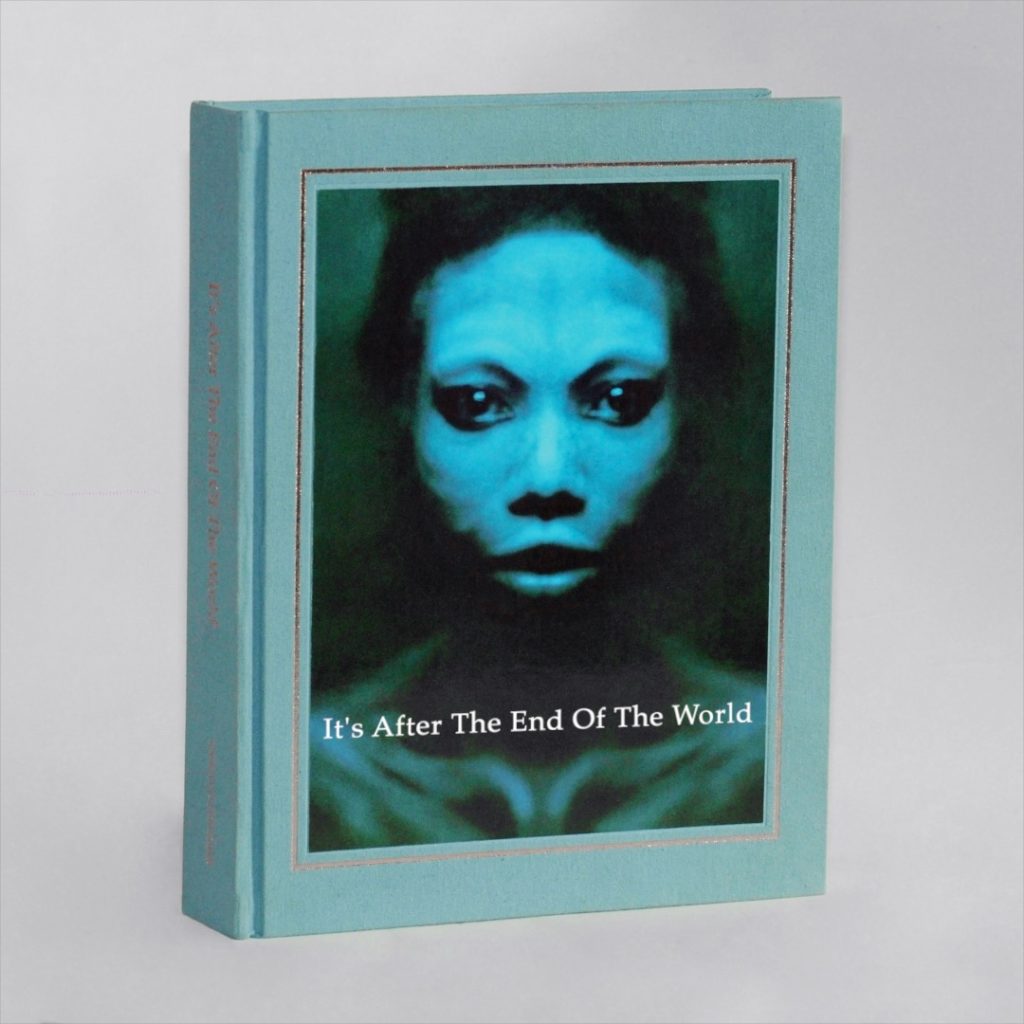
A Picture novel study of the human spirit in the fantastic / magical and the human soul in the metaphorical and physical in Five Chapters – being Oppression, Rainbows, Mythology, Cosmology, Salvation
Here, where globes and their orbits are not circular but oospheres — not just egg forms but energies made pregnant within a certain process freed of the need for what passes for progress;
here, where time and linearity are moot answers to baseless enquiries;
here, where space is produced by men who follow lines they draw across flattened places that never were in space;
here, we locate a road that never goes away, is always there, welcoming.
And here, the artist culls a report to teach us how we learn we have nothing in order to grasp we’ve had everything all along. Together, we are a Black Mass like the breathtaking unknown that surrounds us every night with the unseeable and everyday with the unseen.
Black reveals us as one all-encompassing atmosphere of generic ontology derived from our exposure to everything, unravels the seemingly unbroken web of time and removes the monotony of unloved lives caught in concentric survival strategies.
Black is allergic to the withering costs levied against souls who fear they lack the taste of power.
Black feeds our appetite for elemental truths outering from a space of light.
Black casts off the weight of elementary values — where black and white mirror only what’s base and superficial.
Black washes away the tiny insults that manifest in lazy memories like the lingchi (“death by a thousand cuts”).
Black susses how persistent ignorance fosters casual cruelties that reflect a ubiquitous scourge of petty one-upmanship and responds with foot stomping, gut-busting, doubled-over howls of barrelhouse laughter. Black reclaims its totality as easily as the viewer’s mind completes the limitless spectrum of a monochrome photographic print.
Aboriginal mysteries acknowledge our unity as universal, affirm through ritual that our undying participation abides ancient laws contemporary scientists rediscover by observation. Jenkins grasps this process and wonders who else stumbles along this road no one knows how to begin or to end?
Sun Ra explicitly acknowledged the messages transmitted through us via our imaginations and honoured these gifts with correspondent harmonies. Sun Ra’s universe is After The End Of The World because its contents are bound to Eternity.
Enticed by the potential for saving a world of beings bound to Oppression, Sun Ra meets Angels and Demons at Play and sees how he must play for them (not with them).
Rainbows become sonic tonics, cauldrons of spectral gold:
Sun, hurrah! Who Ra? His story composes a legend living toward its resurrection, his Mythology is our idealism — post-idolatry. Cosmology is the language of this cosmos we maintain, the lighted breath Sun Ra learned to speak, a language you wouldn’t learn If I Told You. Salvation is not a waiting game, has no textbook; to embrace the infinite, one releases everything to be Whole — this is what Sun Ra found through Discipline decided by listening at the door to Cosmos.
Thus, this book is a tarot for today.
This book is inscribed in wounds that cannot scar the spirit.
This book is a tool to foster awareness of oracle as bibliomancy.
This book predicts its own improvement as necessity.
It’s After the End of the World declares a moment of deep insight — of profound listening — amidst the buzzing alarms and alerts that characterize the status quo.
It’s After the End of the World is a manifestation of the eternally unbreakable reality that casts aside the laws of civilised progress.
It’s After the End of the World represents a milestone for the foreverism of an immeasurable cosmic organism that Sun Ra and the legion of Arkestra players in his sungates led Gerald Jenkins to imagine as returned to us.
It’s After the End of the World won’t let you see as others see a cosmos that remains as It ever was.
It’s After the End of the World is After You.
Norman Douglas.
Photographer Gerald Jenkins has long identified as an outsider, and his vast oeuvre spanning nearly four decades reflects his natural affiliation with others who sit similarly at the fringes. His photographic subjects bring their own powerful identities to bear on his work, and Jenkins’ ever-evolving artistic process reflects their varied contributions to his ongoing study of the tension between Western capitalism and ancient spirituality. Incorporating traditional craftsmanship into a nontraditional methodology, he manufactures his own imaginative props for shoots—seashell headphones, moon-shaped facemasks, disco-ball helmets—hand-crafts unique frames, and appropriates imagery from his own extensive archive to create complex, multilayered collages reflecting a worldview at once conspiratorially cynical and profoundly hopeful. With visual overtones of Sam Haskins’ picture novels, these artworks synthesize Jenkins’ many years photographing for fashion magazines and cinema, his documentation of Australian Indigenous Culture, and his ongoing relationship as photographer and friend with the members of Sun Ra’s Arkestra, whose philosophies and corresponding aesthetics gave him the creative entry point he had been seeking to contemplate what indeed comes after the end of the world as we know it.
Jenkins’ growing disillusionment with the fashion photography industry and its treatment and depiction of women—particularly black women—echoed an earlier unease with the discrimination he witnessed towards the Indigenous population in Australia. The fruits of this frustration, however, have been abundant: both drawing upon and challenging fashion tropes and techniques, Jenkins has produced an expansive body of work in collaboration with numerous female models independently of any formal commissions. Often incorporating accessories hand-crafted by Jenkins, with makeup and styling and overall aesthetic decided between photographer and model, many of these shoots have formed part of an ongoing dialogue between Jenkins and his subjects around questions of spirituality, Western capitalism, race, and gender. Natural forms like feathers and leaves are superimposed onto human ones, evoking an underlying organic unity between mankind and the natural world; these divine symmetries connect to Jenkins’ interest in the traumatic separation of Australian Indigenous peoples from their land, the severing of their physical and cultural roots to yield a present divorced from its native past. As noted by Darius James, author of the cult classic Negrophobia, Jenkins evokes a beauty in his subjects that is far-flung from the objectifying world of fashion, deliberately depicting women who “are not for aesthetic contemplation” but rather for “transformative meditation.”
Conceptually and through physical collage work, these stylized portraits are overlaid with symbols derived from a combination of Indigenous and Afrofuturist principles of spirituality. Through visual metanarrative, Jenkins explores Sun Ra’s sci-fi futurism and the movement it birthed, based on the conception of inner and outer space experienced simultaneously and a lost past enacted as a vibrant, fantastical future incorporating Egyptology, cosmology, Christian mysticism, and theosophy—not unlike the Australian Indigenous peoples’ conception of history as being housed within an eternal present, in which time and space are intimately connected. Just as certain integrated forms and symbols bely a deeper unity between man and nature, many also reveal the discreet power structures built into the social and physical architecture of our cities, the suggestion being that ancient conceptions of oneness and spirituality are the true reality, and civilized progress the myth. Out of the seeds of oppression, visualized through pharmaceutical, capitalist, drug and incarceration-related iconography, as well as stereotypical racist tropes reclaimed, are born visions of liberation and salvation.
Elizabeth Breiner
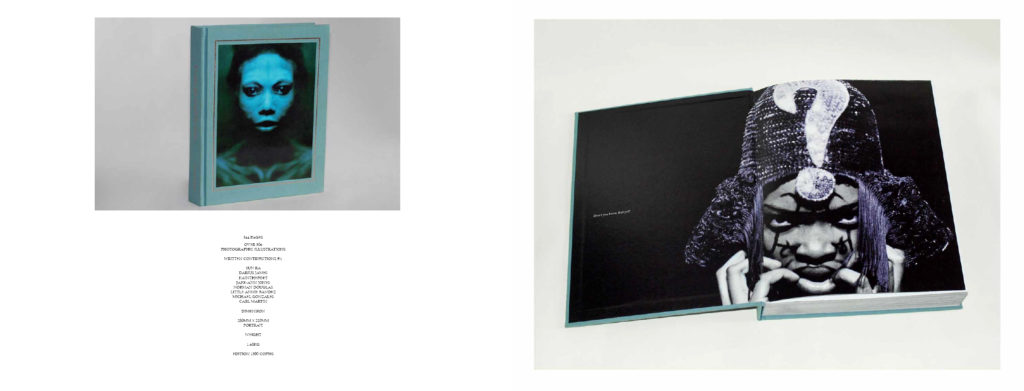
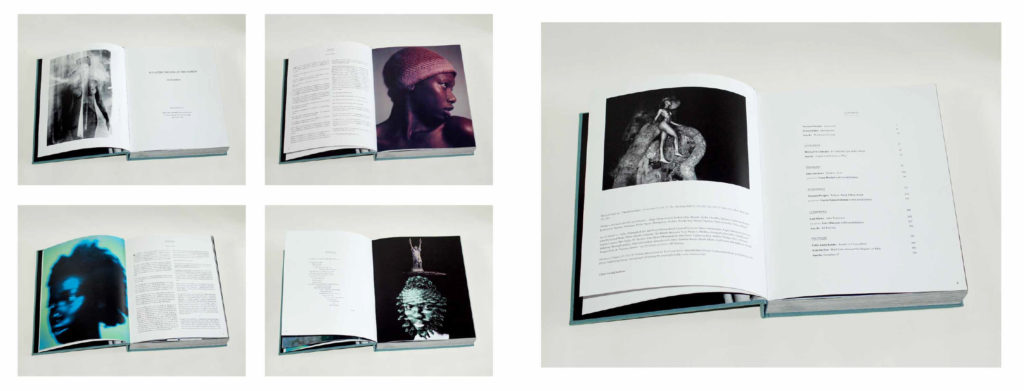
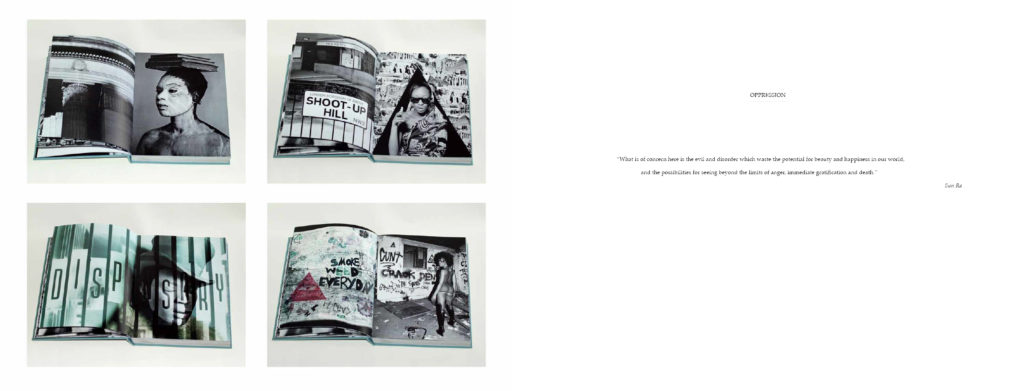
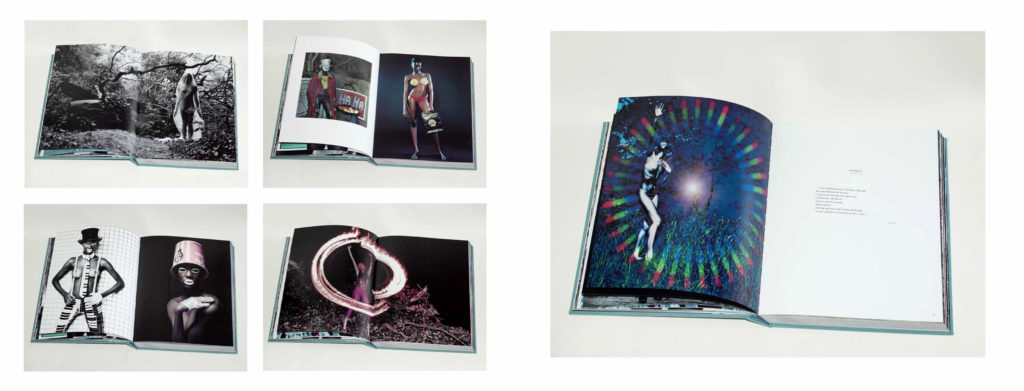
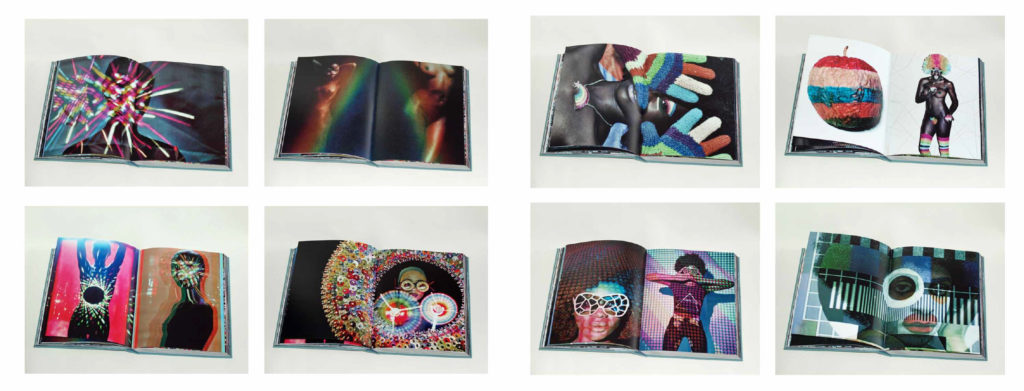
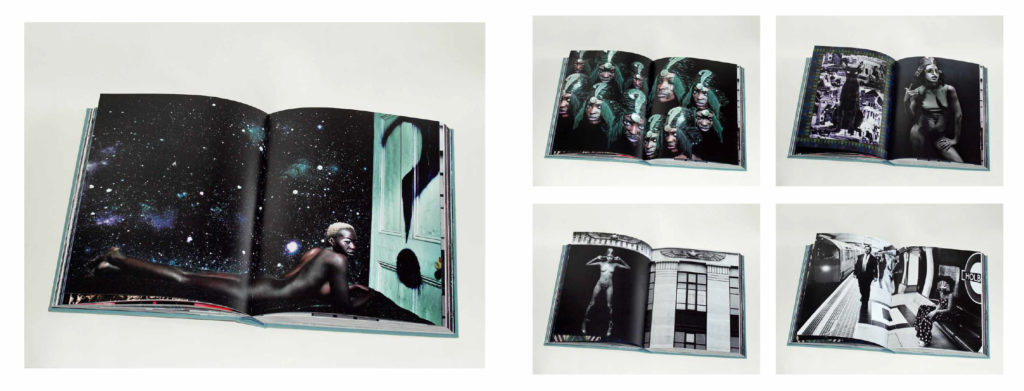
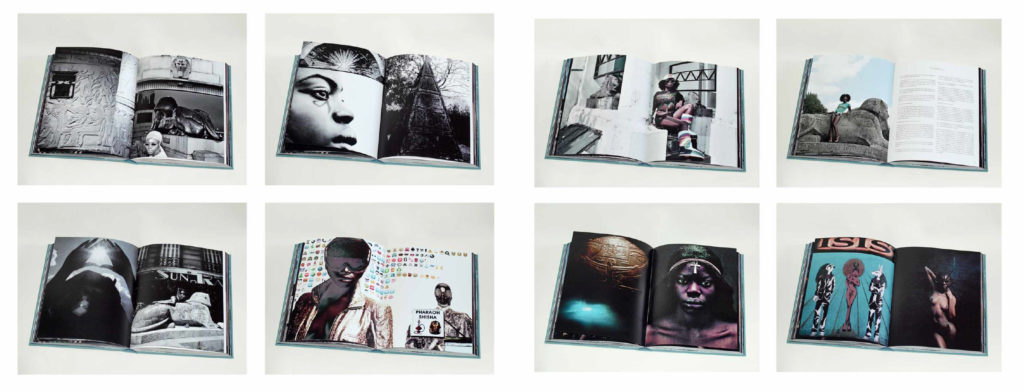
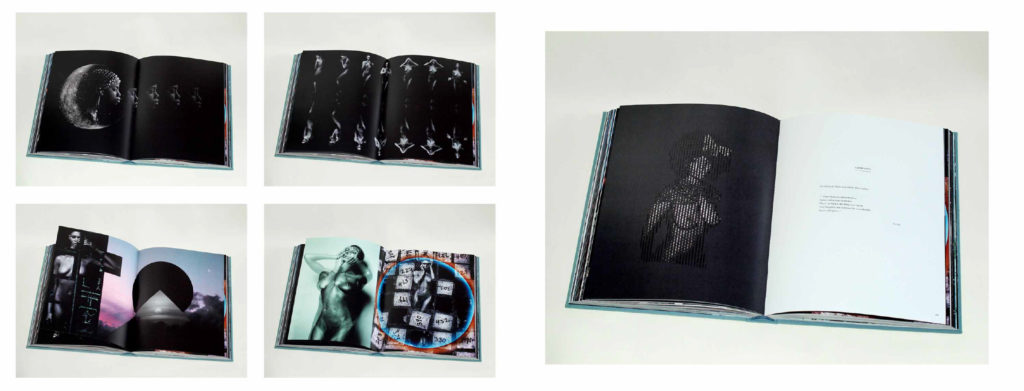
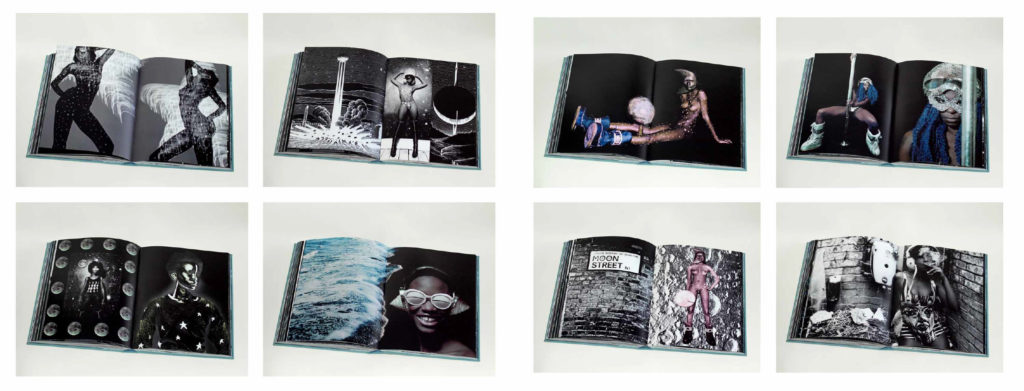
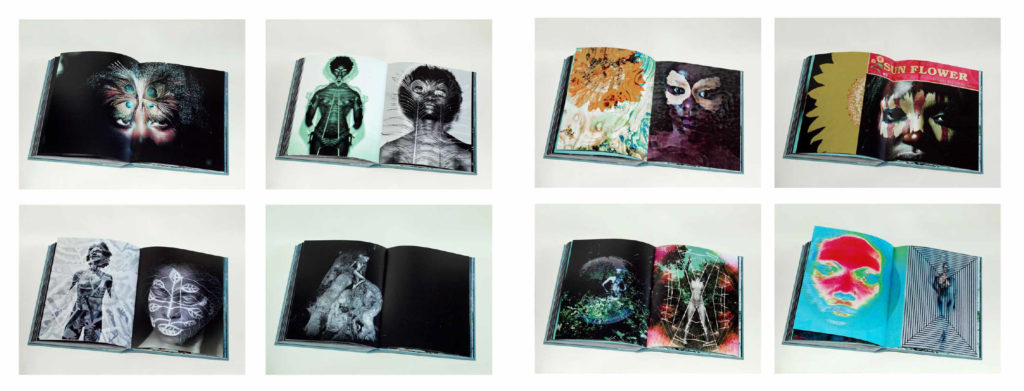
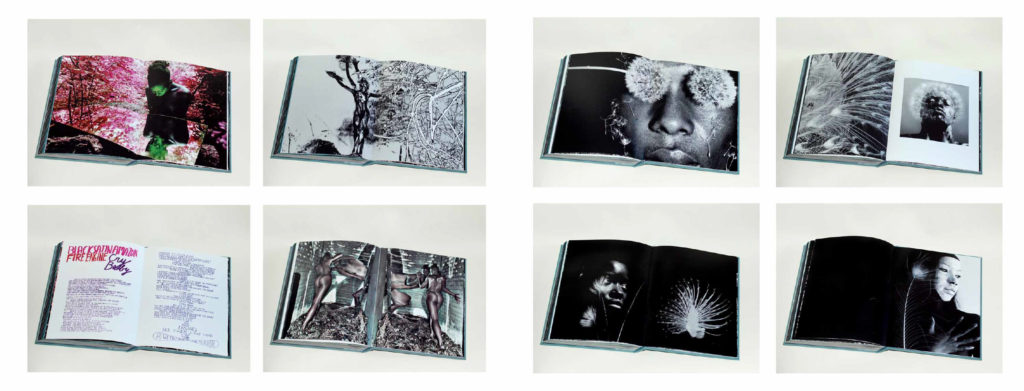
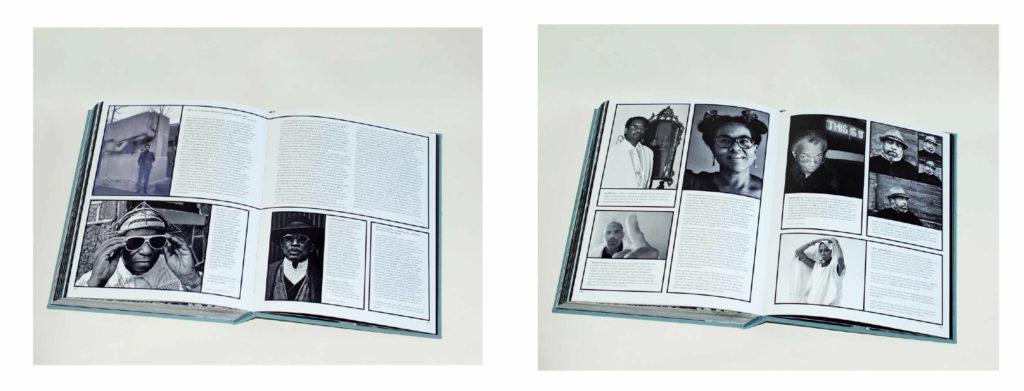
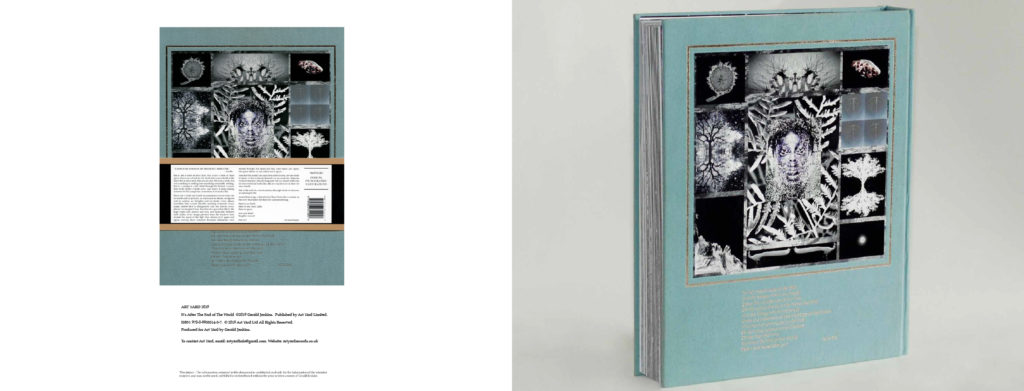
It’s After The End Of The World Gerald Jenkins. 344 Pages. 306 Photographic illustrations (approx) Binding: Faimei cloth hardback with Metal Foiling. Size: 280mm x 220mm Portrait. Weight -1.69kg A Picture novel study of the human spirit in the fantastic / magical and the human soul in the metaphorical and physical in Five Chapters – being Oppression, Rainbows, Mythology, Cosmology, Salvation. With poems by Sun Ra and Handwritten Lyrics by Kainthepoet. Written Contributions by Norman Douglas, Darius James, Jake-ann Jones, Carl Martin, Little Annie, Michael Gonzales.
ART YARD 2019
It’s After The End of The World ©2019 Gerald Jenkins. Published by Art Yard Limited.
ISBN: 978-0-9933514-5-7. © 2019 Art Yard Ltd All Rights Reserved.
Produced for Art Yard by Gerald Jenkins.
To contact Art Yard, email: artyardinfo@gmail.com.
